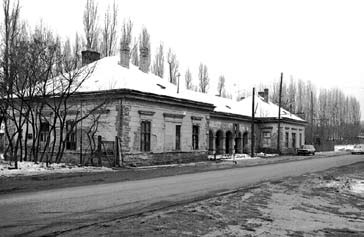Subotica, as a transit point on a vital road that connected Tisa and the Danube, grew and developed from the 13th to the 14th century. In the second half of the 18th century, it gained the status of a free royal city from the Vienna court. The new status made it possible for the city to seize customs duties, of all those who wanted to trade on its markets. If traders did not bring goods through customs or excise duty, the settlement was surrounded by shanks that were insurmountable obstacles to the carriage loaded with goods. Dikes were a symbol of the administrative boundary of the city and did not have any defensive role. The city could only enter over seven so-called. gates: Sombor, Petrovaradin, Senec, Segedin, Macesan, Halaš and Bay. The subotics called the mobile ramps, which passed passengers and traders when entering and exiting the settlement.By the ramp, the excise houses were built, which were at the crossroads of the roads in and out of Subotica.
It started taxing imported drinks. Apparently, domestic production did not satisfy the local gourmets, as traders considered profitable transportation of wine and brandy products to Subotica. In order to use the city for this source of income, in the spring of 1783, small excise buildings were built near the gates, and on May 10, 1784, officials were appointed to begin charging taxes. Already that year, more than 10,000 forints were collected. Later on, this amount grew to 12,000 forints a year.
The growth of the city’s population and revenues increased and excise duties, by increasing the number of fairs and market days, were gaining significance. Since 1743, Subotica has already had three famous fairs and a weekly market every Monday. Soon after, “Heti” came into existence, the second weekly market day on Friday, announced on August 21, 1817. The carriages were held in the center of the city, in squares in front of the churches of St. Theresa and Franciscan monastery. The market has long occupied the space that is now parked outside the City Hall.
Luckily, a large cattle market, it was between the Bay and the gate of Galician, quite distant from the denser populated city quarters. However, by introducing the railway, it became meaningless to drive the cattle to the scaffolding in Baja, and further. By decision of the city assembly, on March 27, 1889, the cattle market was moved to areas outside the Sombor gate. In the hope of increased traffic in the spring of 1890, a new “passport” was built at the site of earlier, small and inconvenient excise duties.
The excise was designed by the then urban engineer, famous subotica architect Titus Mackov (1851-1919) in the style of the then ruling eclectic. Almost all works of this gifted builder are located in Subotica, where he is one of the most deserving engineers of the city’s subtle city core in decades of the turning point of centuries.
By the decision of the Ministry of Culture of the Republic of Serbia dated 17 August 1998, the demolition is permitted by moving the Excise to a new location, not far from the old, further from the street front, where it would be rebuilt according to its original form. The preliminary design was developed by the Inter-municipal Institute for the Protection of Cultural Monuments Subotica.
The explanation states that Tššarina was in a ruinous condition, extremely close to the road, physically and chemically endangered, therefore every function in it is extinguished. By moving and later rebuilding, the object would be saved from further deterioration. By putting in the function of a business building, it will breathe life into the facility and the environment, Subotica will have an appropriate entrance to the city. At the same time, the regulation of the crossroads of the JNA and Hippodrome streets would be solved. In accordance with the preliminary design, it will be possible to build a parking space on the free plot of Subotica Municipality, which will be located north of the new facility.
EXCISE DUTY


0 comments on “EXCISE DUTY”